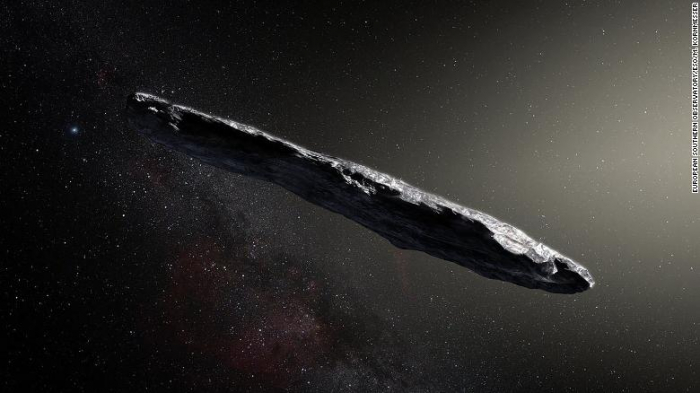Researchers believe that in the future, we can expect to see several large objects that originated outside of our solar system zipping through it. And there could be hundreds of smaller objects passing through each year.
The first observed interstellar object, or object that originated outside of our solar system, was 'Oumuamua. It was observed over a few weeks in October 2017. Astronomers have debated whether or not it was an interstellar asteroid or comet.
The second object, 2I/Borisov , is an interstellar comet that was observed at the end of August this year. It was recently named by the International Astronomical Union's Minor Planet Center for the amateur astronomer who first observed it, Gennady Borisov. Astronomers will be able to observe 2I/Borisov for at least a year to learn more about the object.
These are the only two that have been observed, but that's likely to change according to a new study accepted for publication in The Astrophysical Journal Letters.
"There should be a lot of this material floating around," said Malena Rice, study author and graduate student at Yale University. "So much more data will be coming out soon, thanks to new telescopes coming online. We won't have to speculate."
Studying these visitors to our solar system can help astronomers determine where they came from. One theory is that they're leftovers from other solar systems that got kicked out into interstellar space.
But of the 4,000 confirmed planets outside of our solar system, called exoplanets, most are closely orbiting their stars -- which means they couldn't eject planetary building block leftovers called planetesimals. In a close orbit situation, these leftovers would be stuck in orbits where they formed.
The new study suggests that these objects could actually be leftovers from large, newly formed planets with a distant orbit of their star. These large planets would leave gaps in the disk around the star where material like gas and dust is used to form planets. The disk is called a protoplanetary disk.
Because of the distance from the star, these planets could send leftovers out into space.
These planets are harder to observe because they are located farther from their stars, which is why fewer of them have been found.
The researchers looked at three bright, nearby and large protoplanetary disks imaged by the Atacama Large Millimeter/submillimeter Array Telescope in Chile. This was part of the Disk Substructures at High Angular Resolution Project, known as the DSHARP survey.
"We were looking for disks in which it was pretty clear a planet was there," Rice said. "If a disk has clear gaps in it, like several of the DSHARP disks do, it's possible to extrapolate what type of planet would be there. Then, we can simulate the systems to see how much material should be ejected over time."
"This idea nicely explains the high density of these objects drifting in interstellar space, and it shows that we should be finding up to hundreds of these objects with upcoming surveys coming online next year," said Gregory Laughlin, study author and Yale University astronomy professor.
When these objects enter our solar system, it offers astronomers the opportunity to understand more about the universe. They act like fingerprints for their part of the galaxy.
"You're not looking at a distant star through a telescope," Rice said. "This is actual material that makes up planets in other solar systems, being flung at us. It's a completely unprecedented way to study extrasolar systems up close — and this field is going to start exploding with data, very soon."
More about: astronomy interstellar solar-system
















































